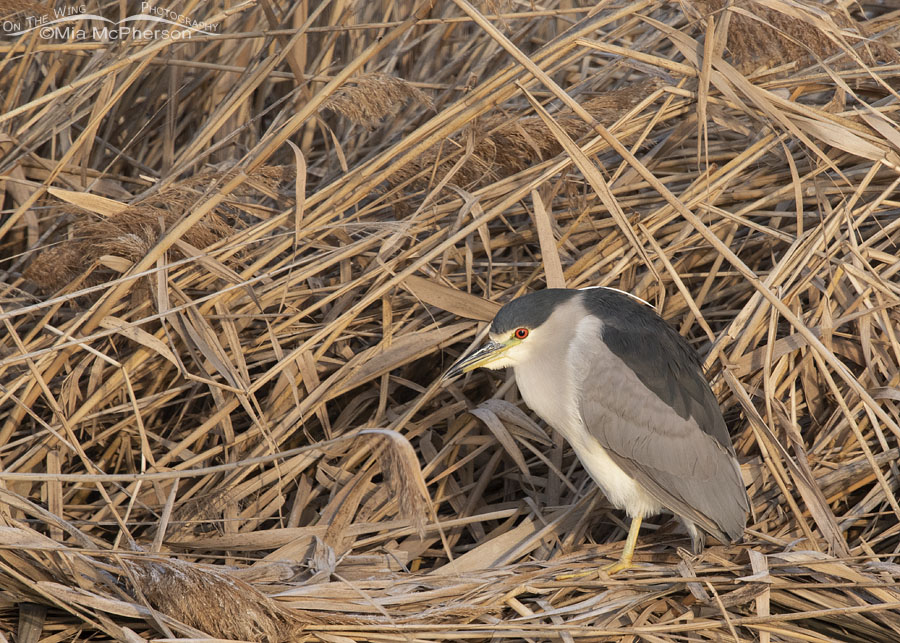 Resting Black-crowned Night Heron adult – Nikon D500, f7.1, 1/640, ISO 800, Nikkor 500mm VR with 1.4x TC, natural light
Resting Black-crowned Night Heron adult – Nikon D500, f7.1, 1/640, ISO 800, Nikkor 500mm VR with 1.4x TC, natural light
About two weeks ago I was able to photograph two Black-crowned Night Herons, one was immature and the other was an adult. I have already shared some photos of the immature night heron and today I decided to share one photo of the adult.
The adult Black-crowned Night Heron was resting on the phrags in the warmth of the rising sun and didn’t do much at all except turn its head now and then. I was delighted to photograph it though because I don’t see these night herons as much as I used to here in northern Utah.
I’ve wondered if extensive phragmites mitigation at both Farmington Bay WMA and Bear River MBR has had a part in seeing fewer of these striking night herons than in previous years. Black-crowned Night Herons prefer to have cover in their day to day lives and with less cover after phragmites removal they may have moved out into areas of the marshes surrounding the Great Salt Lake where there is still enough vegetation for these night herons to feel safe and secure from predators.
At Bear River MBR the phragmites mitigation near the auto tour loop hasn’t just removed the invasive phrags it has also taken some of the native rushes and cattails down to their roots as well. With less cover birds like these night herons, bitterns, soras and rails have nothing much to hide in let alone suitable habitat for nesting and raising their young.
The managers of our state WMA’s and the National Wildlife Refuges here in Utah are doing their best to eradicate the invasive phrags and I truly hope they can. Still, I am concerned because we are seeing far fewer of these night herons than we used to and that has me concerned.
Life is good.
Mia
Click here to see more of my Black-crowned Night Heron photos plus facts and information about this species.


Here in south Florida we have the opposite problem in our local rookery. After Hurricane Irma pushed several trees down into the canal along the rookery the water management district removed them, but also cut back the branches which extended over the water These were the favored nesting sites for the Yellow-crowned Night-Herons. They even clear-cut about a third of the shore and phragmites have now invaded that area. Last year only 2 pairs built nests but both abandoned before laying eggs. This year I am finding only 2 adults which are in breeding plumage but do not have mates. Their courtship should be happening right now. Sad!
Beautiful lighting highlights this bird so well. Didn’t know that about phragmites, they look pretty but are they sticky or prickly?
I’m trying to find out if you sell pictures. Can you reply?
R Lewis Phillips, I’ve emailed you a reply but I have a feeling that my reply may have been sent to your spam folder, please whitelist @onthewingphotography.com. I’ll wait a bit then send you another email.
The balance between eradicating invasive species and protecting native species (especially those that have accommodated well to the change) is a delicate one, indeed. Thank you for sharing this lovely Night Heron
It sounds like a quandary.
I do understand their need for cover – and also the desire to eradicate the invasive phragamites…
I hope that whereever they are the night herons survive and thrive.
Cool photo, mia